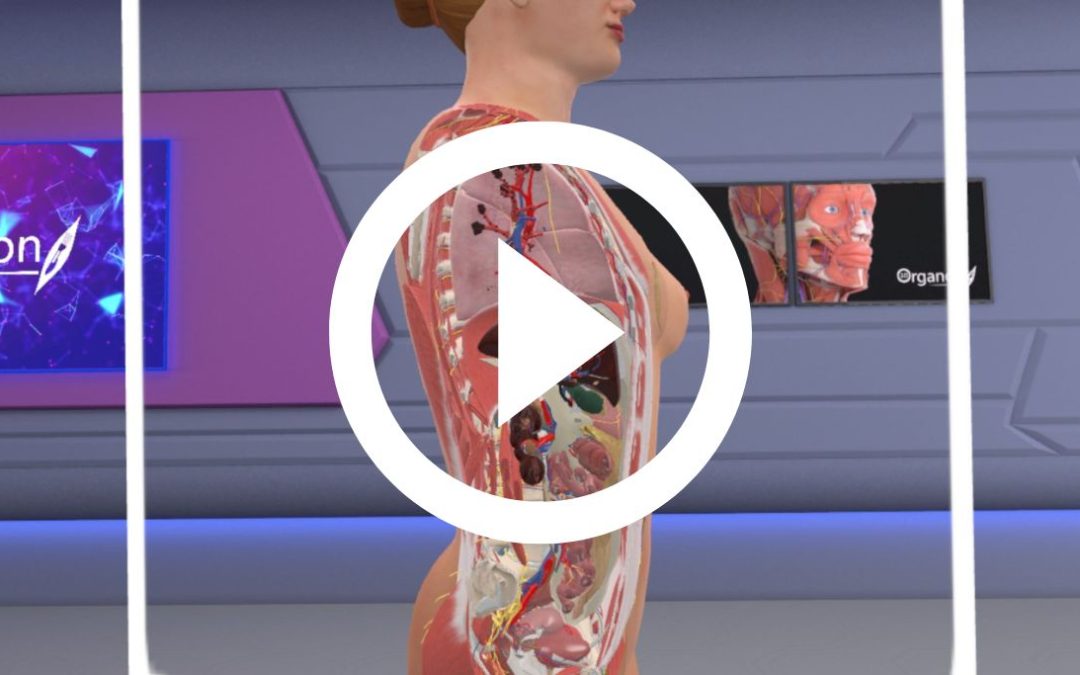Sectioning in 3D Organon
3D Organon Sectioning Tool is incorporating multiple viewing alternatives of the human body in real-time. The functionalities are realized in the built-in parameter of the section plane position, changed dynamically using sliders so that various anatomical structures can be cut during the simulation. 3D Organon’s Sectioning module gives an insight into the relationships among the anatomical structures. The students get familiar with the orientation of anatomic cuts or slides, underlying principles behind conventional radiography, computerized axial tomography (CT), magnetic resonance imaging (MRI), ultrasound, and body actions. Clinical and surgical procedures can be easily explained to students and patients as structures are cut away on a modular approach.
Body Planes and Sections
There are four basic reference planes used in anatomy:
- the sagittal plane
- the coronal plane
- the transverse plane
- the oblique plane
A sagittal plane divides the body into sinister and dexter (left and right) portions.
A coronal or frontal plane divides the body into ventral and dorsal (front and back, or anterior and posterior) portions.
A transverse plane, also known as an axial plane or cross-section, divides the body into cranial and caudal (head and tail) portions.
An oblique plane is a plane other than a horizontal or vertical angle.
Applications of Body Planes
Body planes have several uses within the anatomy field, including in medical imaging, descriptions of body actions, and embryology. In anatomy, the anatomical body planes and sections help students understand the various ways in which the body can be viewed when cut into sections.
Anatomical cross-sections involve cutting a structure at right angles to its main axis and viewing the newly formed cut face in two dimensions. This view provides the essential view of ?depth? often misused in medical education.
Body planes are used in computed tomography (CT), magnetic resonance imaging (MRI), and ultrasound (US) to identify the orientation of anatomic cuts or slices shown in the procedure. Imaging in several planes is often used to show large sections of anatomy.
Anatomical planes are used to describe the action axis performed by the body. An anatomist could model a limb?s range of motion by measuring these planes along which planes limb can move and how far it can move.
?natomical planes help to view any anatomical change during embryological development. These planes provide a basis in comparative embryology to see different types of organisms? development within the womb. In the initial phase of human embryonic development, the coronal plane looks horizontal, while when the embryo develops into a fetus, it looks vertical in position.
3D Organon 2022 Edition
The sectioning tool is available on PC Powered and Standalone VR Headsets. You can also use it on the multi-user feature.
3D Organon is the world’s leading XR medical anatomy platform. It is available in 16 languages. The new 2022 edition of 3D Organon includes over 12.000 anatomical structures across 15 body systems, showcasing new features such as imaging, ultrasound VR simulator, histology slides, images, refactored body actions, new microscopic models, and new environments among others.
Watch the Sectioning Video in 3D Organon' s YouTube Channel
For the latest news, follow 3D Organon on social media.

